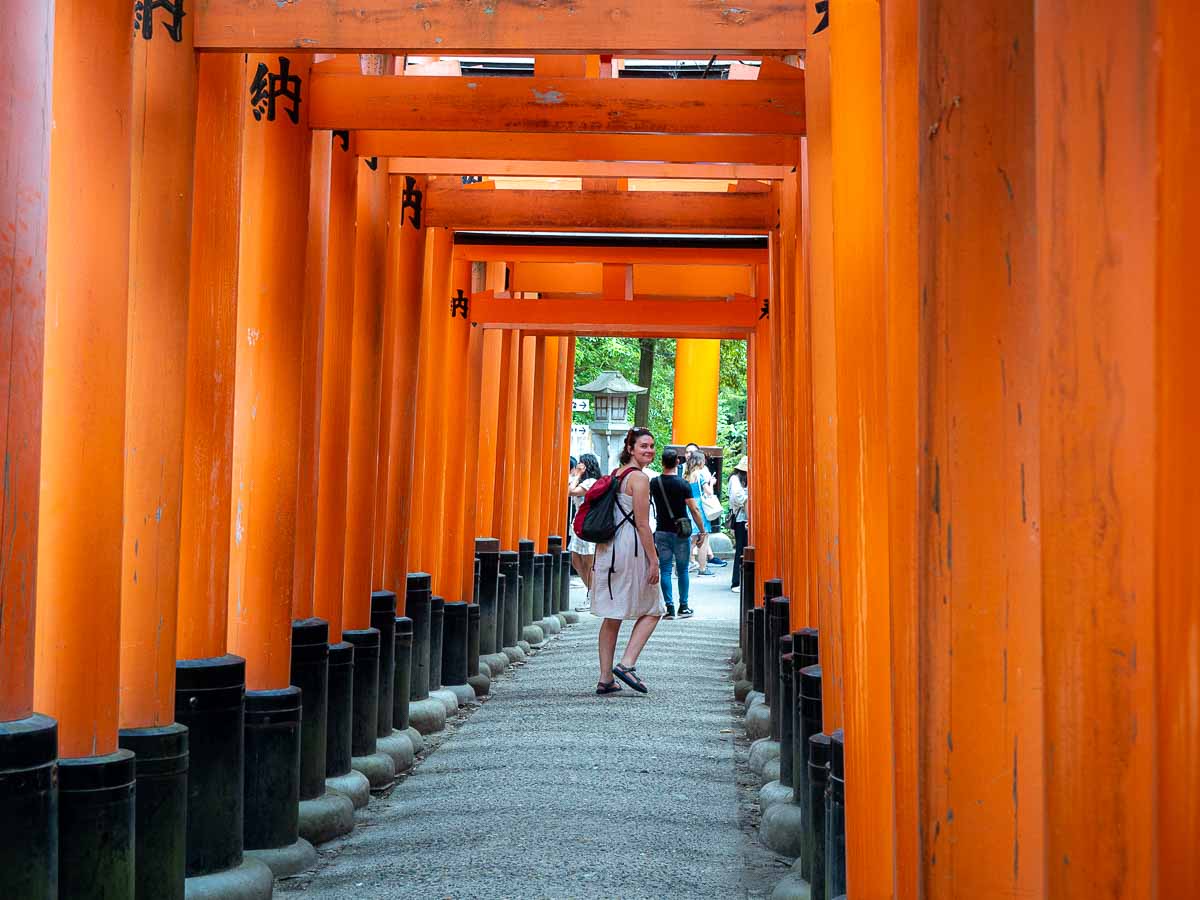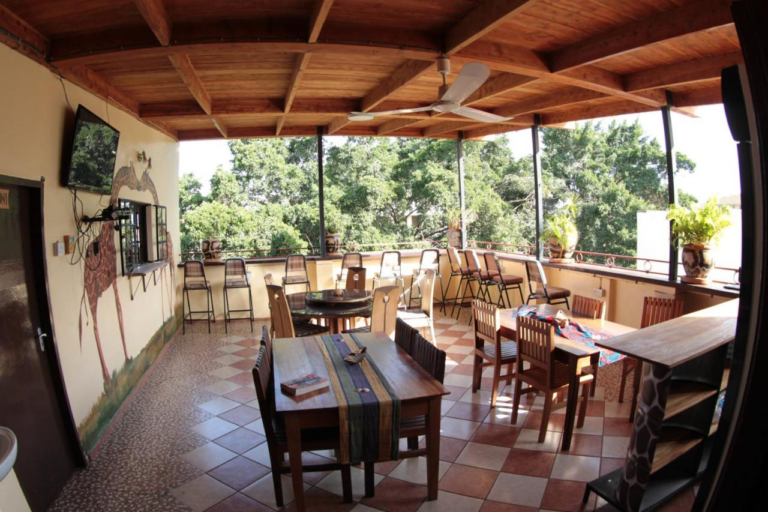What To Do In Kyoto | 2-Day Itinerary (With Map!)
I get strange looks from people when I tell them I didn’t really rate Japan
(I didn’t realise this was such a controversial opinion!)
But that’s mainly based on the big city vibe from Tokyo and Osaka to be honest. The pace, the hustle and bustle, the stress people (locals) seemed to be under every day.
Even as a tourist, everything felt very prescribed, very regimented. It felt very hard to step past that and discover Japan for myself, organically.
Fortunatly when we arrived it Kyoto it was a breath of fresh air. Things felt quieter. Slower. More relaxed.
People seemed less stressed. Kinder. More tollerant of me as a dumb tourist! And the attractions we’re just filled with forign tourists, but with local Japanese tourist too.
We loved Kyoto!
Hot Take: Skip the chaos of Tokyo and Osaka and head straight to Kyoto – for a quieter, cuter, and more authentic Japan experience.
Table of Contents
What To Do In 2 Days In Kyoto
Spending just two days in Kyoto feels a bit like trying to fold a thousand paper cranes in one sitting. It’s ambitious, slightly chaotic, but surprisingly rewarding.
Its also not long enough!!
Between the temples, gardens, shrines, and culinary experience, this city has a way of slowing time.
Here’s how I soaked in Kyoto over two days, along with what I recommend doing differently for your visit
My Take: When I was googling ‘what to do in Kyoto’ every list told me I had to visit about 23 different temples! That’s cool and all.. but I can’t do more than a couple of temples (shrines) before all my spending money ends up in a wishing well. So I’ve tried to make this list a little more well rounded, with heaps to eat, drink and do.. and only a couple of temples 🙂
Day 1 Itinerary
Waking up in Kyoto feels quieter than anywhere else I’ve been. With only two full days in the city, I wanted them to count. So we set the tone with a morning hike and let the day unfold from there.
1. Hike Fushimi Inari Taisha
We arrived at Fushimi Inari just before 7 AM, and the world still felt half-asleep. The iconic red torii gates wind up Mount Inari like a portal into another world. We took the advice from a reddit post to get there early and, after passing by again later in the day, it was obvious why!
Tip: Trust me on this – you’ll want to get there early!!
What I didn’t realize until I was there was just how long the path was. The full hike to the summit can take two hours round-trip if you stroll, which we did (of course!) but there was so much to take in.
Along the way, you’ll encounter tiny shrines with fox statues peeking from the trees.
The further up you go, the fewer tourists you see, so you’ll have a better opportunity to appreciate your surroundings and take a couple of pics. The view from the top is well worth the walk!
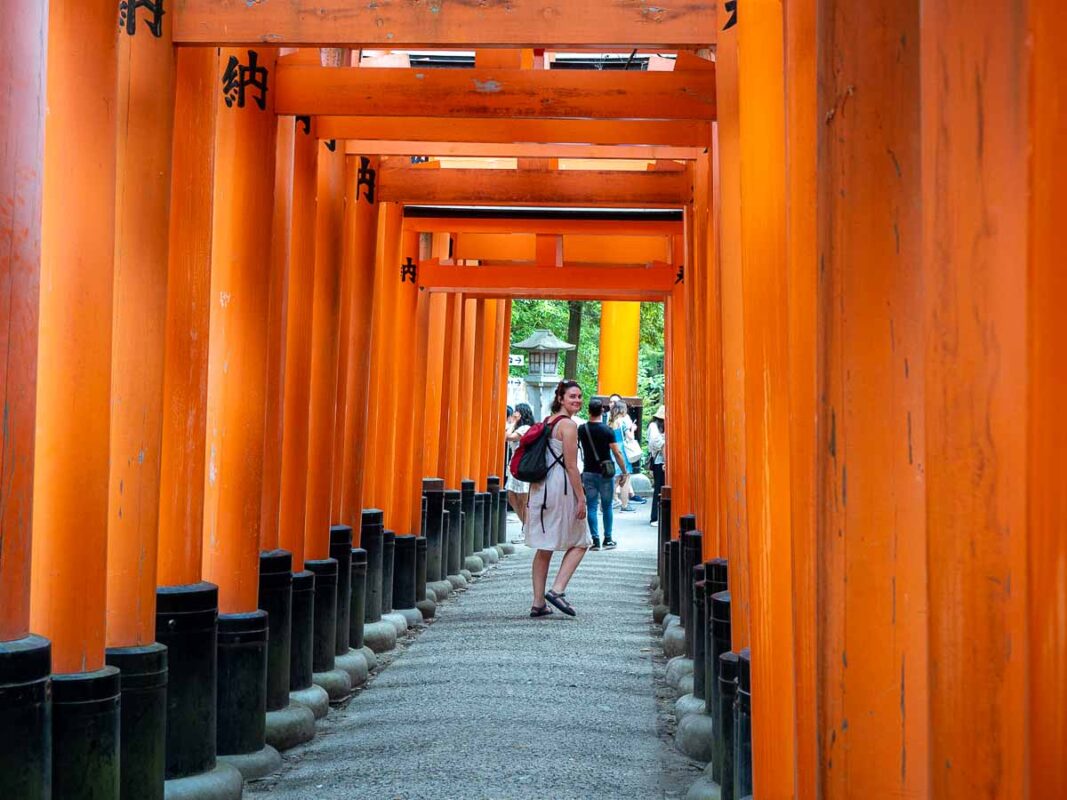
2. Take a Train to Uji For World Famous Matcha
Back to the hotel for a freshen up and then on a quick train south to Uji. It’s less crowded and more local.
Byodo-in Temple was our first stop. You know that phoenix design on the back of the ¥10 coin? That’s this temple. The main hall floats over a still pond. After a brief tour, I sat across from it under a maple tree, listening to the rustling leaves and the soft splash of koi.
Just down the road is Nakamura Tokichi, one of Uji’s oldest and most famous matcha shops. Their matcha parfait is earthy, silky, and light. Exactly what we needed after walking all morning.
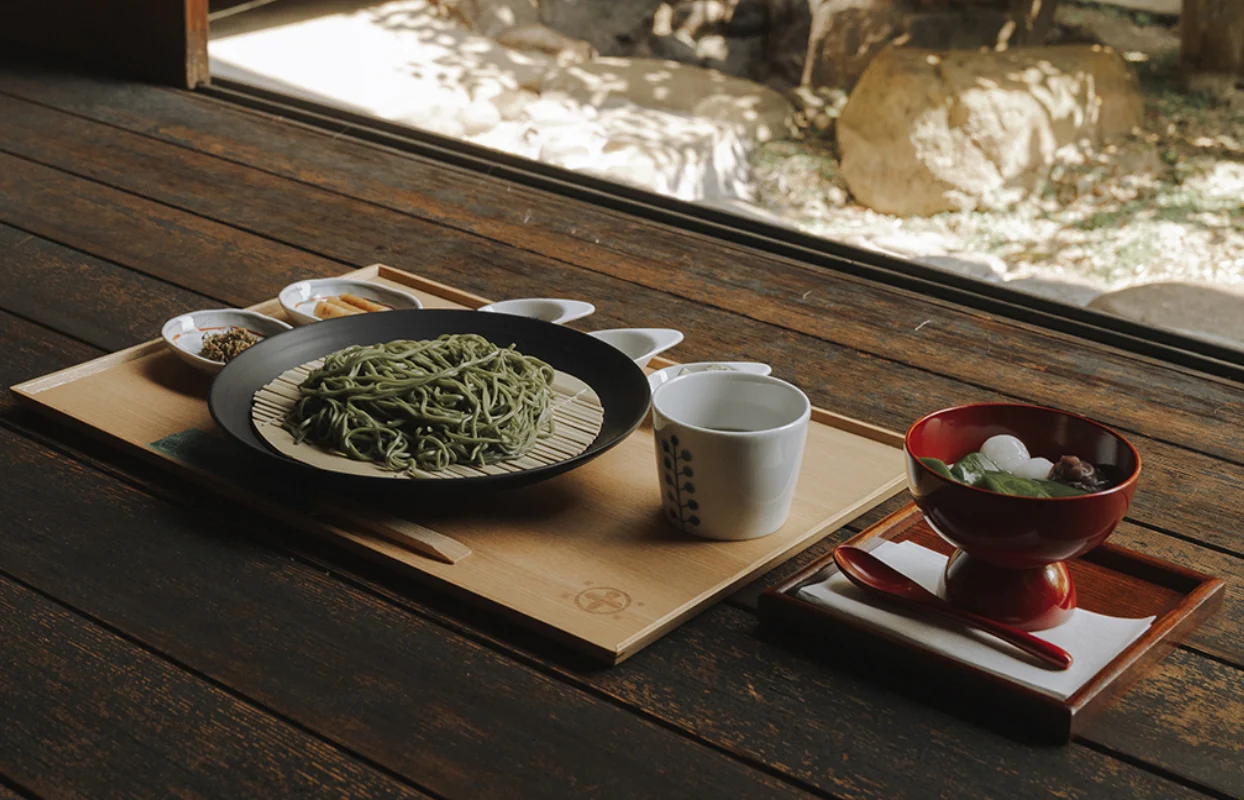
3. Fushimi Sake Village
No trip to japan is complete without sake right?
Well how about trying 24 different sake’s in one sitting?
This may not have been the best lunch option but it sure was fun! This is on the train ride back into central Kyoto from Uji (our last stop). Head into Fushimi Sake Village and pick one of the maky sake bars to choose from.
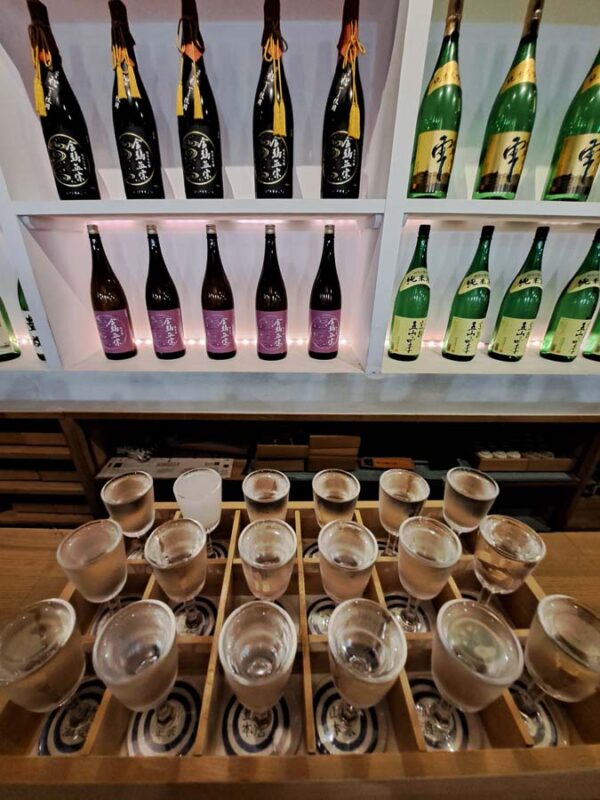
3. Overload Your Senses at Nishiki Market
Back on the train, and back into central Kyoto in the early afternoon, just in time for the bustle of Nishiki Market.
Let me just say, this place is a sensory overload in the best possible way. It’s the kind where you let your stomach and curiosity lead.
You’ll find tiny stalls with treats and products of every kind. What I love about Nishiki is how peaceful it is. You wander, graze, and talk to the vendors, many of whom have been here for generations. It feels like the opposite of the grab-and-go food culture I’m used to back home.
Recommendation: You’ll only scratch the surface walking through the market by yourself. The best way to really experience it is with a guide and with your stomach! We took the Nishiki Market Food and Culture Tour and would highly recommend you do the same (Book here on Viator)
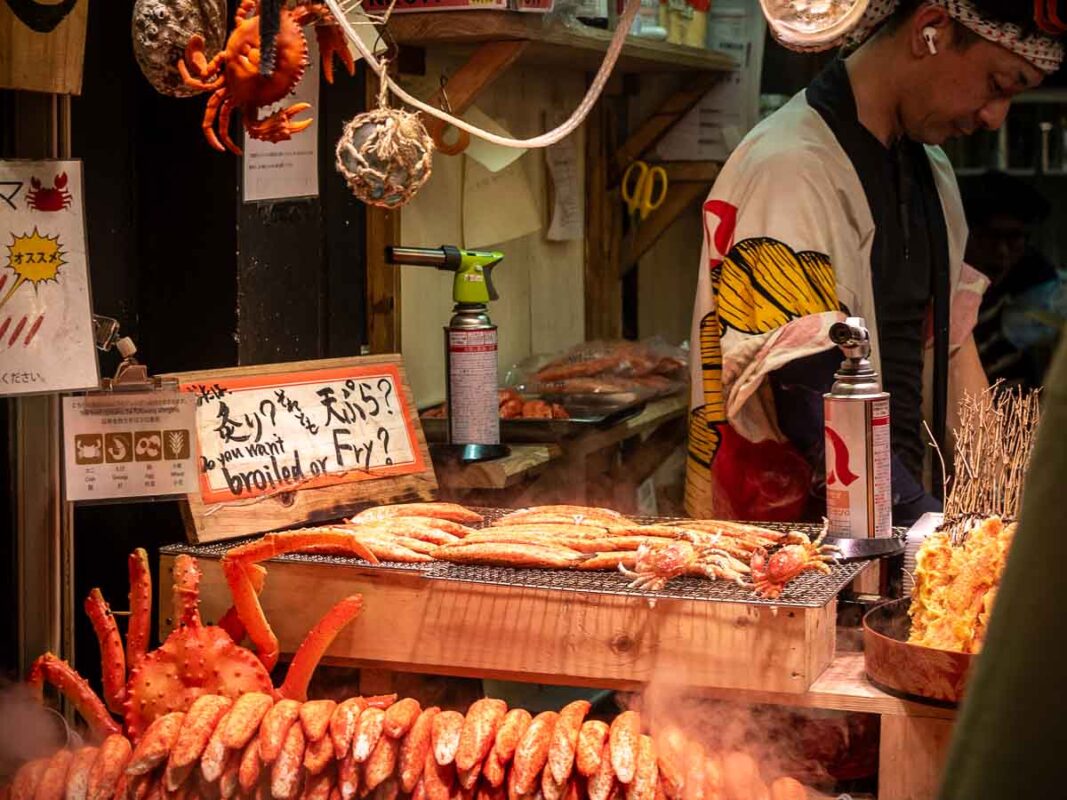
4. Participate in a Tea Ceremony at Camellia Flower
Next on the list, a traditional tea ceremony at Camellia Flower, a beautiful little tearoom tucked away near Ninenzaka. I’d never done anything like this before, and I was a little intimidated. I expected stiff formality and lots of rules.
But our host was warm and engaging. She explained every movement with grace and humor, breaking down the symbolism behind the ritual and the precise way to turn the teacup before you sip.
We booked on Viator for $40pp and was able to get a spot for the next day, but apparently this sells out well in advance in busy season so might pay to check ahead of time
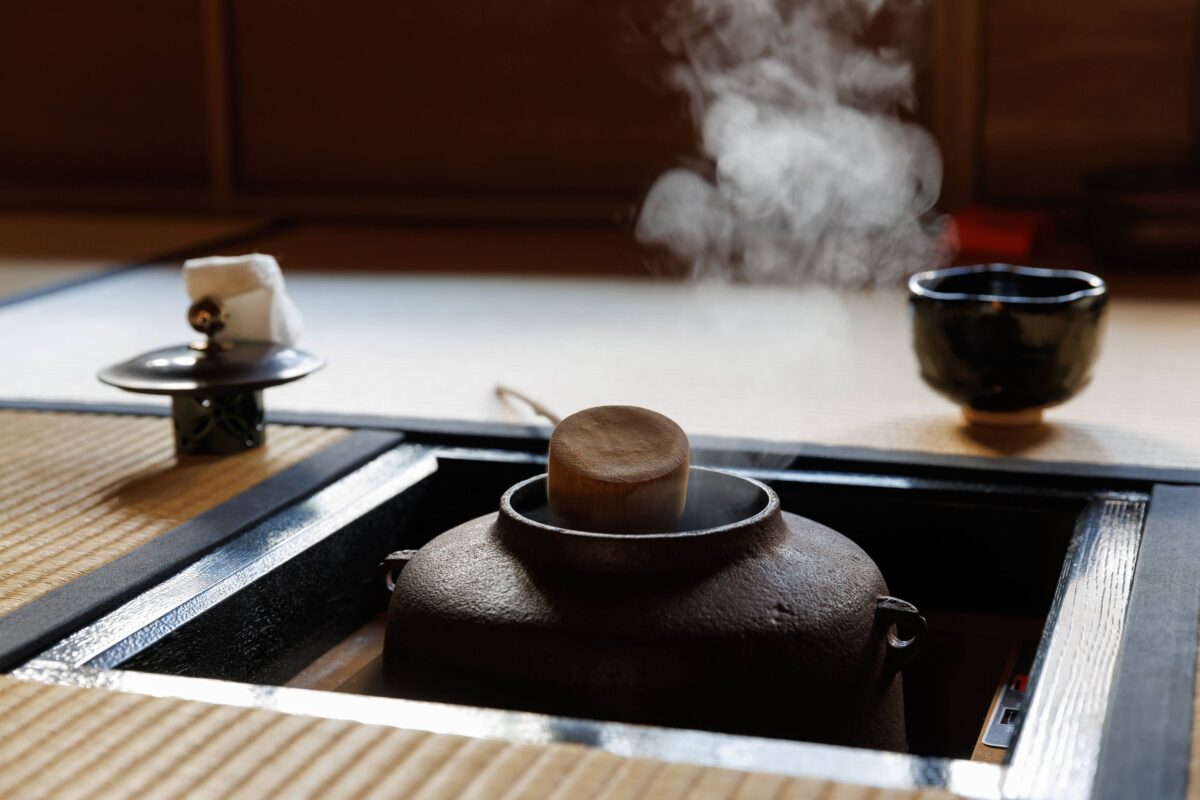
5. Visit Yasaka Shrine in the Famous Geisha District
As the sun dipped low, We found ourselves wandering through Gion, Kyoto’s famous geisha district. I’ve read about this place and thought it might feel overly touristy.
Yasaka Shrine at the edge of Gion was glowing by the time we reached it. The shrine has stood for over 1300 years, and even though there were people around, it still felt sacred. The lanterns swayed gently in the breeze, casting golden light across the grounds.
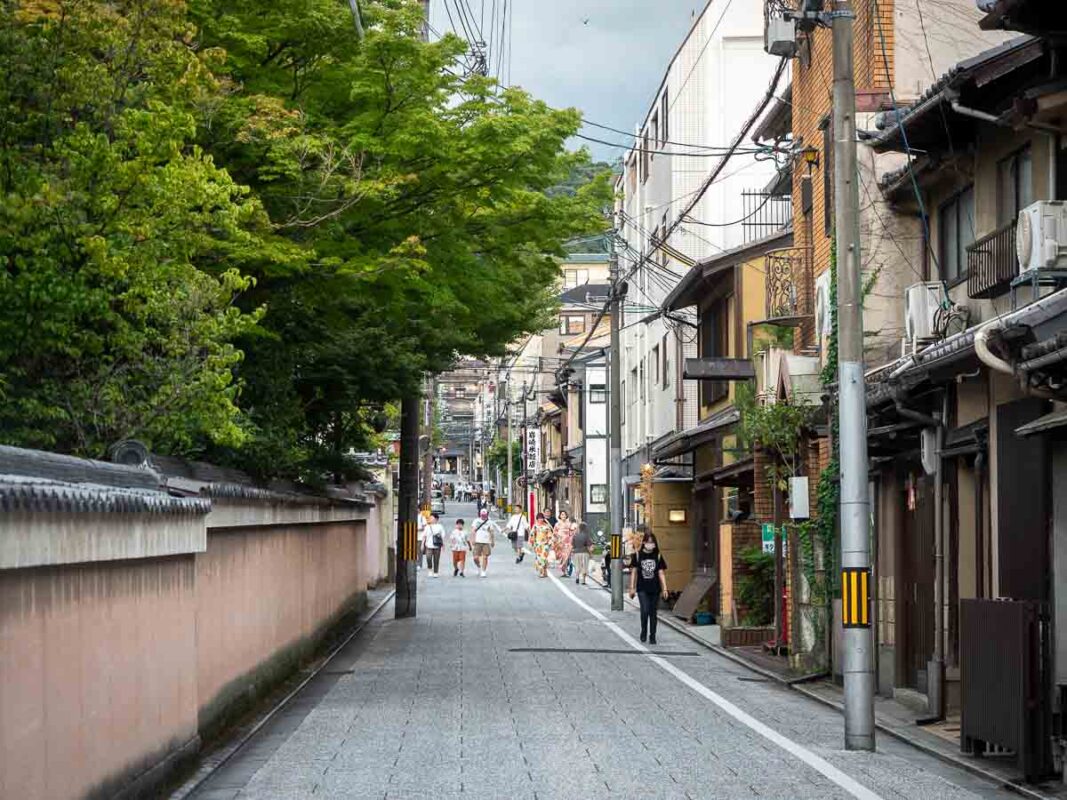
6. Dinner at Gion Yamagishi
Dinner that night was a Kaiseki meal at Gion Yamagishi, and it was the perfect way to close the day. Each course is seasonal, symbolic, and beautifully presented. We ordered mountain vegetables, delicate sashimi, and warm miso soup.
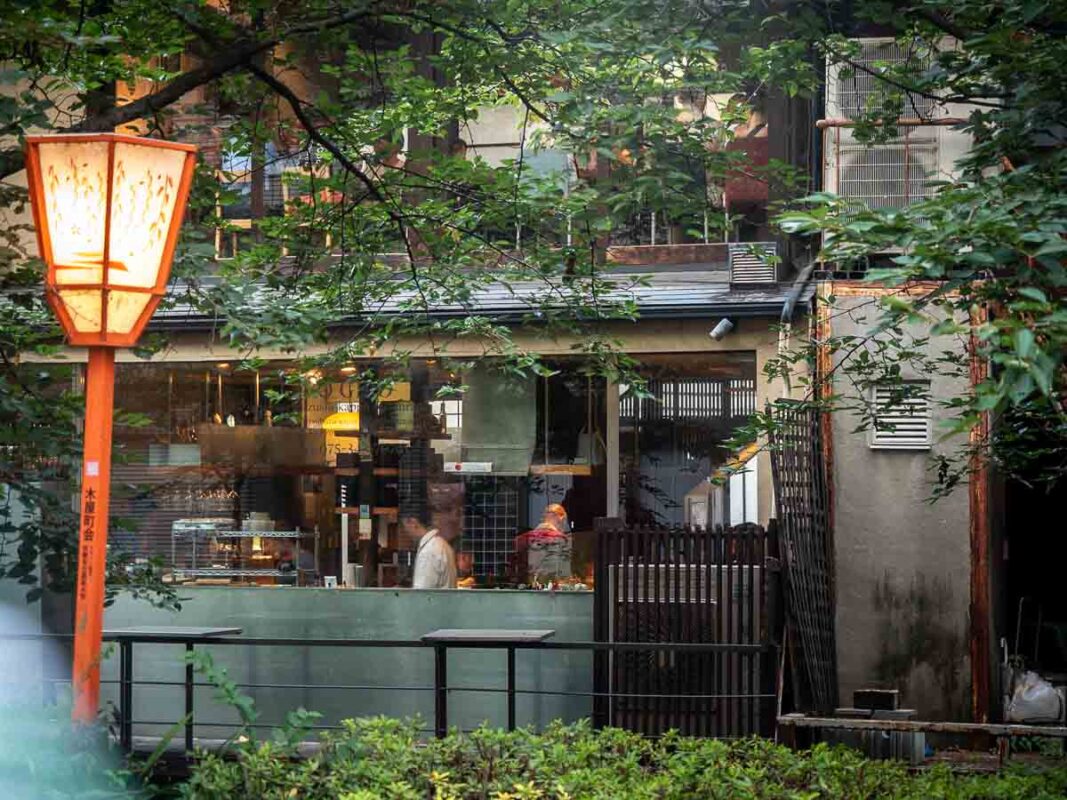
7. Stay the Night at The Celestine Kyoto Gion
We checked into The Celestine Kyoto Gion for the night (We’ll, we actually arrived the night before but it reads better this way).
It was like the perfect base for this kind of soulful day. It’s modern with hints of traditional design, and is positioned in the perfect spot for walking to most of Kyoto’s attactions
The Celestine Kyoto Gion offers world-class service, convenient access to Kyoto, as well as a seriously nice onsen, and a renowned Japanese restaurant, making it a perfect choice for couples and travellers alike.
There are plenty of more budget options of course, but this would be my recommendation for your visits 🙂
(you can book here through Booking.com)
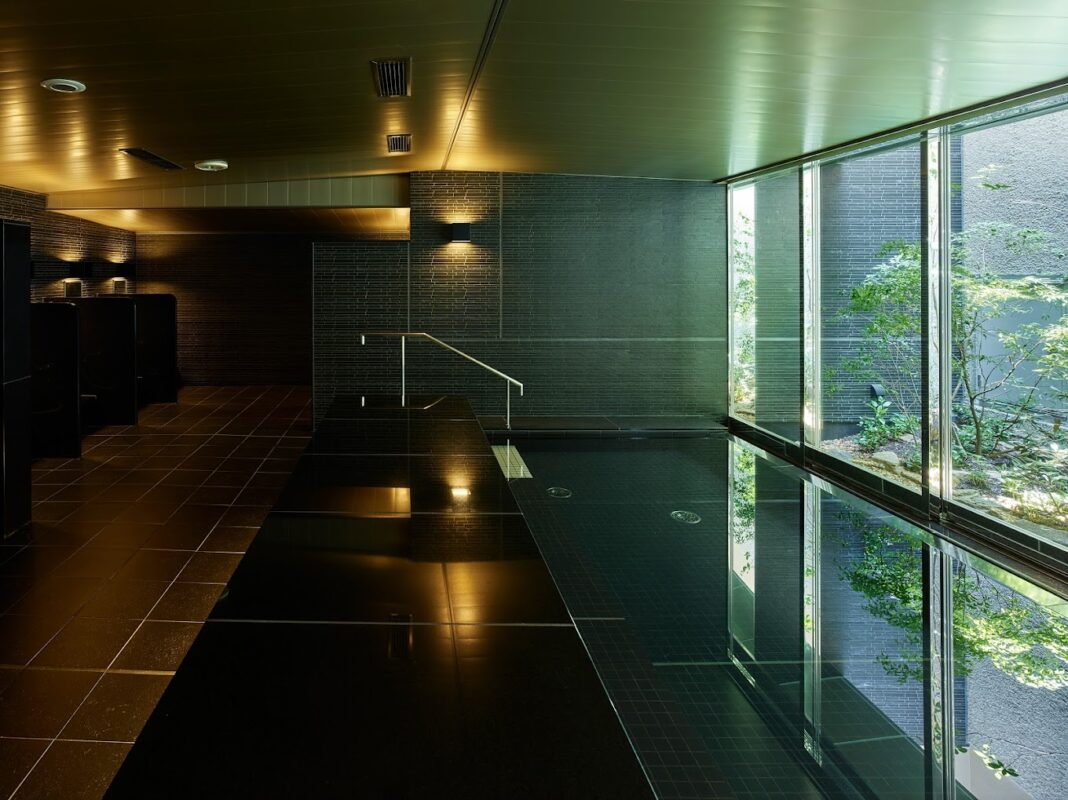
Day 2 Itinerary in Kyoto
After a full first day of cultural highs, we wanted the second day to be more about exploring Kyoto’s natural beauty.. And a chance to eat some more epic food of course!
1. Morning Walk at the Arashiyama Bamboo Grove
Our day starts early again, this time heading out to the Arashiyama district on the western edge of Kyoto. I’ve seen photos of the famous Bamboo Grove, but nothing really prepares you for it. The bamboo stalks tower above you, so tall they almost seem to sway together like a forest of giants.
We also wandered past the Tenryu-ji Temple. It was slightly busier here, but the Zen garden calms the mind effortlessly. After the peacefulness of the bamboo grove, this felt like the perfect contrast. A wide expanse of raked gravel, carefully placed rocks, and beautiful flowers in bloom.
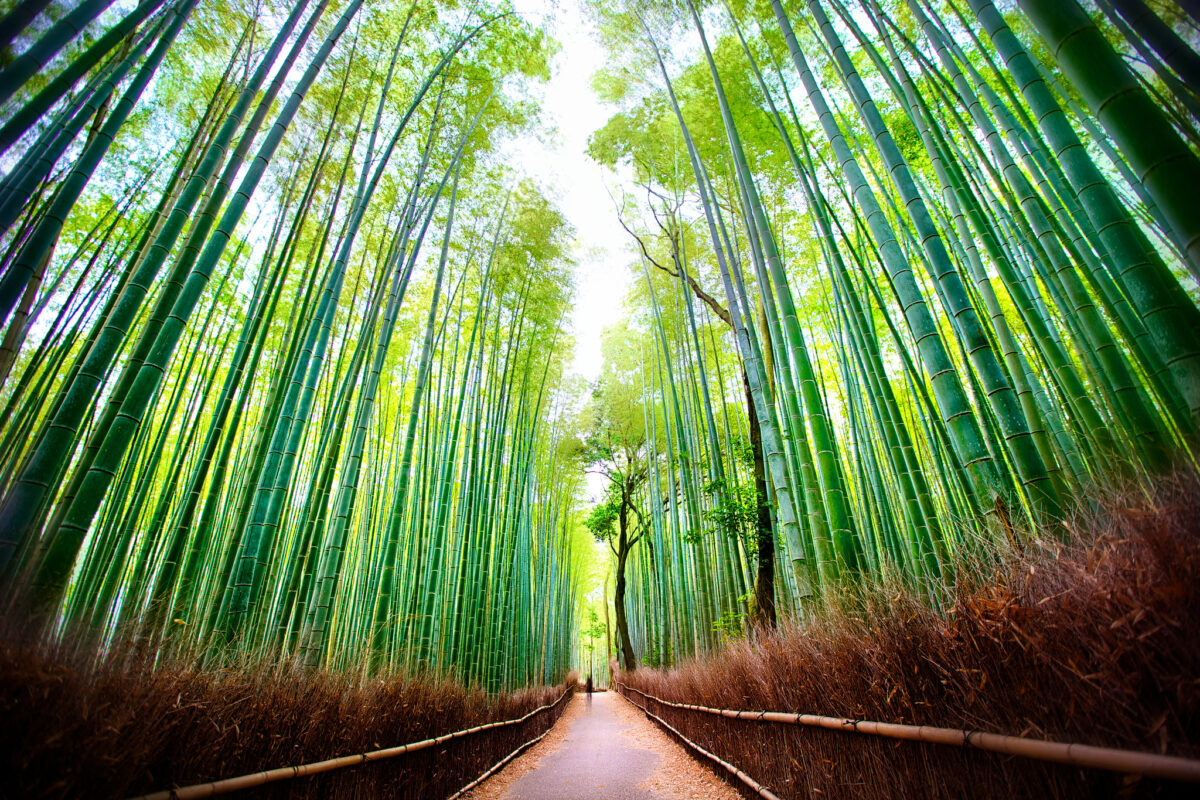
2. Stroll Through the Otagi Nenbutsu-ji Temple
After soaking up the serenity of Arashiyama, it was off to Otagi Nenbutsu-ji Temple. Hidden in the hills behind Arashiyama, this temple is quiet, surrounded by thick trees.
The temple’s charm lies in its hundreds of statues, each one carved with a different facial expression. Unlike the grand temples that often feel more like tourist attractions, this place has a real energy.
The small crowds, the winding paths through the trees, and the sound of birdsong in the air made it feel like I had stumbled upon Kyoto’s secret.
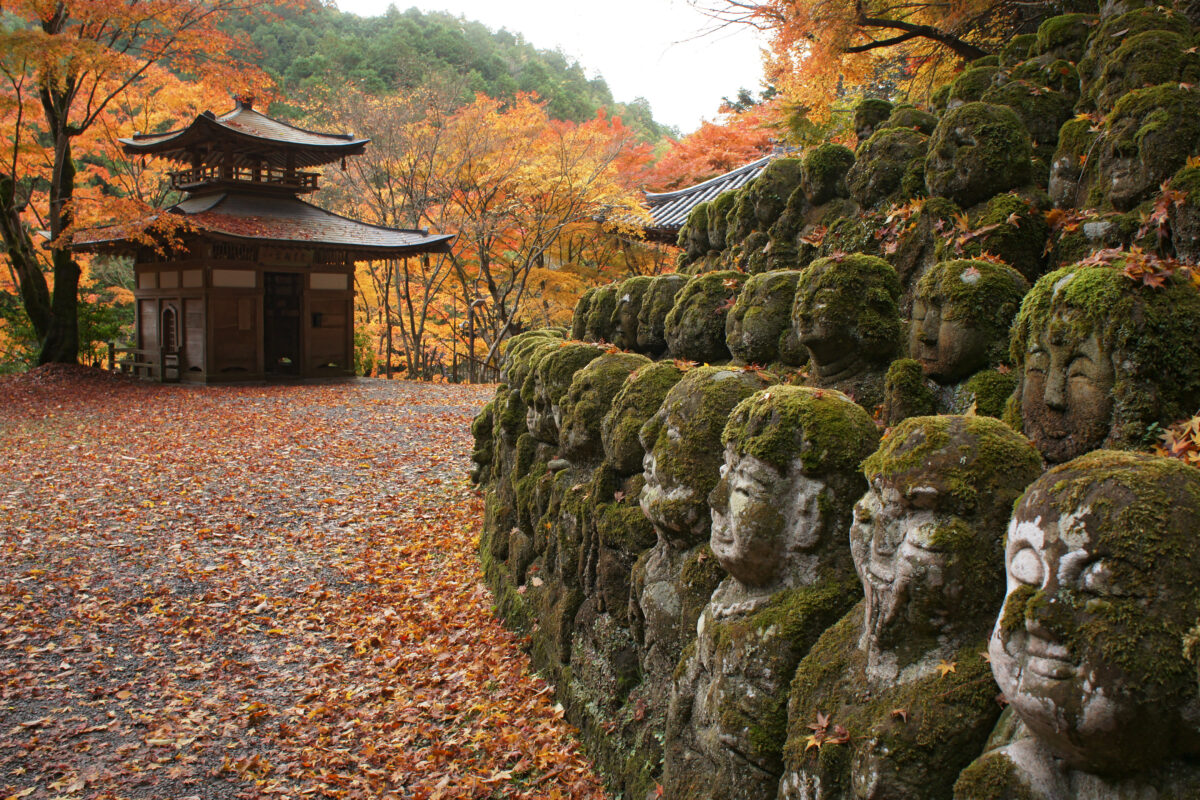
3. Grab Some Local Fare Lunch At Totoya Resturant
We stumbled apon Totoya by chance – looking for something good, cheap and authenic on the way to our next activity, the Hozugawa river cruise. (google maps link)
This local resturant has no english menu but the staff are super helpful and there are some pictures at the wall you can point to 🙂
🚗 Transport Tip: Take a taxi from Otagi Nenbutsu-ji Temple to Totoya. Then one you’re done its only a short stroll across the road to the Riverboat Cruise (your next adventure!)
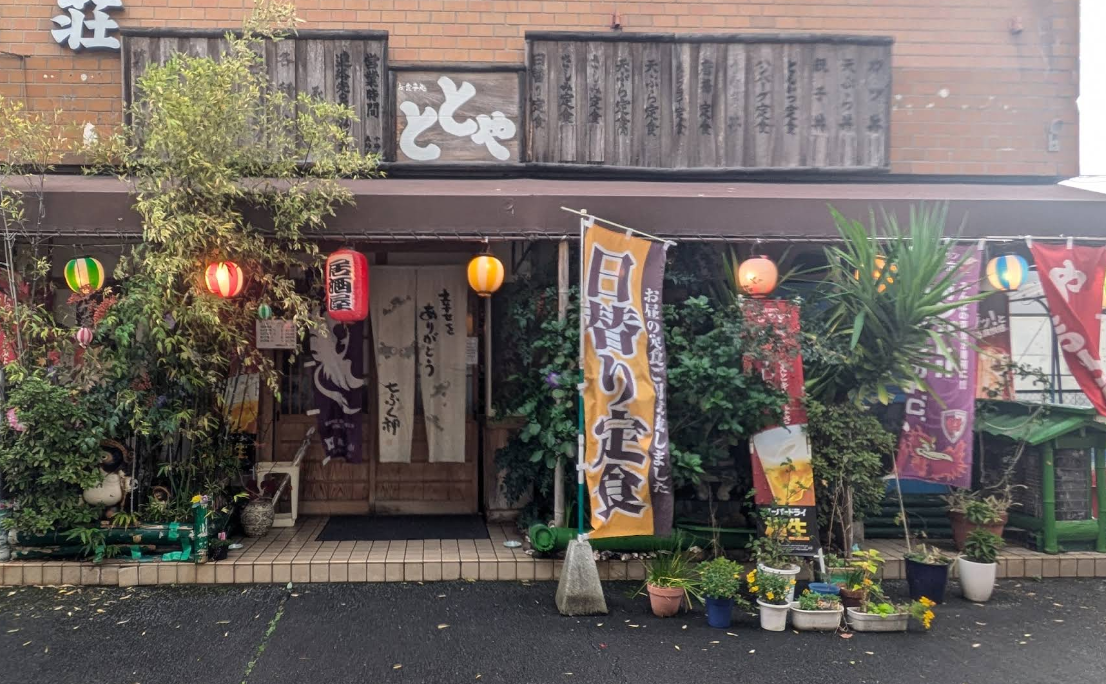
4. Cruise the Hozugawa River
After lunch we made our way toward the banks of the Hozu River. There are a few different ways to do this, but I went with the traitional yakatabune – flat-bottomed boats, steered by experienced boatmen with oars and bamboo poles.
The scenes are splendid. You’ll encounter willow branches trailing into the current, herons standing near the edge, and the occasional flutter of maple leaves above. It’s a great way to admire the cherry blossoms if you’re then in season.
Boats leave every hour. Get tickets online here or simply rock up and pay the boat man
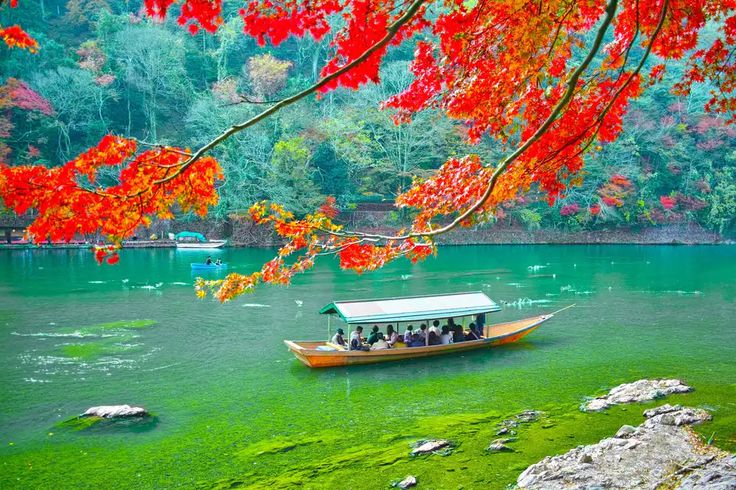
5. Wrap up the Evening in The Pontocho Entertainment District
As the sun started to sets, we’ll make mway to Pontocho, one of Kyoto’s oldest entertainment districts. It’s about a 10 minute walk from the hotel.
The hubub is centred around the banks of the river but as you venture a few streets back the energy mellows out and busy puplic houses are replaced with narrow alleyway, quaint teahouses, restaurants, and lanterns. It was enchanting.
We had dinner at one of the laneway restaurants (checking out but avoiding the more touristy riverside bars). We lingered after the meal, just walking around the district and admiring the city at night.
🍜 Dinner Rec: Between our hotel and Pontocho we stummbled upon Moshimoya (google maps link) – a tiny laneway resturant with a set menu (no choices here) writen entirely in Japanese. This ended up being one of my favorite meals in Japan so check it out if you’re in the area.
Return for the night at the Celestine Kyoto Gion
I stayed in the same hotel as the night before. By this point, the peaceful setting had become my sanctuary. After a long day of walking and absorbing Kyoto’s beauty, there was nothing better than sinking into a deep bath and wrapping myself in the hotel’s plush robes.
6. Optional Extra! View Kiyomizu-dera
Depending on your energy levels there may be time to squeeze in one more sight.
No visit to Kyoto is complete without seeing Kiyomizu-dera, and even if you’re templed out, you don’t want to miss it. We arrived around mid-afternoon, and while it was definitely busier than some places I’d been the day before, the views made it worth every bit of the crowd.
Perched on the edge of a hill overlooking the city, this temple has sweeping views of Kyoto. The main hall is impressive too. I stood on that platform for a while, just taking in the view, feeling like the entire city was laid out before me in a patchwork of old and new.
The water from the Otowa Waterfall beneath the temple is believed to bring good fortune, and I didn’t pass up the chance to drink a cup. Whether it worked or not, I felt lucky just to be there.
Japan Travel Planning Cheatsheet 🇹🇿
🚑 Should I buy travel insurance for Japan?
100% YES! — Japan has “free” healthcare but it’s only for citizens! Tourists need travel insurance in case anything happens on your visit. Also be aware many policies won’t cover hiking as it’s a high risk activity! (that’s right, check the t&c’s on your complimentary credit card insurance)
I highly recommend World Nomads as you can get specific add-ons for the crazy activities you’re doing – and starts at just $7 a day!
🏩 What’s the best way to book my Kumano Kodo accommodation?
Your only realy two options here are Kumano Travel and Booking.com. Its a complicated process so I wrote this guide here on the best kumano kodo accomodation options
If you don’t want to figure it all out (it’s meant to be a holiday after all) you can book a package tour. Here are my recommendations for both guided and self-guided.
💸How do you pay for things in Japan?
Japan may have flying robots.. but they also still use cash! So you’ll want to get some folding tender out from an ATM when you land. EFTPOS / Debit / Credit Card and Paywave (contactless payments) is common at bigger businesses but small bars, and street vendors want cash.
I personally use a Wise debit card for all my international money needs as they only convert the funds when you make payment, plus they offer a much better spread (margin on the true exhange rate) than the banks do. They work in all Japanese ATMs I tried.
🚙 Do you need to rent a car in Japan?
I wouldn’t reccommend it — Transport in Japan is expensive whatever mode you chose, but fortunalty the publc transport system is out of this world in terms of both freqency and coverage. If you are heading to a lot of off the beaten track places, then you may want a rental. I use Discover Cars to find the cheapest rates on rentals cars and remember you can save money if you avoid picking up at the airport.
🚆 What about the JR Rail Pass?
We didn’t – but it depends on the length and itenirary of your trip. The JR Pass is expensive (and just went up in price again!) and if you’re walking the Kumano Kodo you wont need it for probably 6 days straight anyway.
Do the math, but in most cases buying the train fares you need, when you need it will work out more afforably overall – and give you more flexibility (as the JR Pass doesn’t cover all lines)
📲 How do I get internet/data/wifi in Japan and on the trail?
This one needs a whole nother article, but the short version is;
- local SIM cards are cheaper but generally require a fixed term contract (not practical for people visiting)
- Tourist ‘short stay’ SIMs are a bit more expensive but will give you plenty of data while your visiting and are best for solo travelllers.
- If you’re travelling as 2 or more people, renting a pocket WIFI unit from the airport is the most economical option – Works out cheaper than getting two tourists sims
- Use a travel eSIM like Saily or Airalo. This works from the moment you land is is SOOOOO much easier than trying to pick a data pack in japanese. It also gives you connectivity across neighbouring asian countries if you buy a regional sim! TIP: I used to use Airalo but now find Saily a much better product – you can get 5% off with code SPECIAL5
✈️ What’s the best site to buy flights to Japan?
For finding cheap flights, I recommend Skyscanner. Once you find the flight you’re looking for, I’d then suggest booking directly with the carrier (even if it costs a few $$ more than with one of the agreggators/agencies).
💧Can you drink the water on the Kumano Kodo?
Yes — Japan is very clean. In all townships you’ll pass through and stay along the Kumano Kodo the tap water is drinkable. If you want to drink water from the rivers and streams you generally can but should do so at your own risk. ALWAYS follow best practice and drink from fast flowing water as far up stream as possible. I drank the water and was fine.. but i’d generally recommend a Brita Water Bottle for rehydrating on the trail safely.
🎫 Do I need a visa for Japan?
Likely Not — Japan now recognises 70 countries as ‘visa exempt’ for short term stay. So if you’re a US, UK, NZ, AU and EU passport holder you don’t need a Japansese visas. However, some other countries do (check here!). And if you plan to stay for more than 90 days (an average tourist visa length), you will need to look into the Japanese working holiday visa scheme, or the new Digital Nomad visa scheme.

